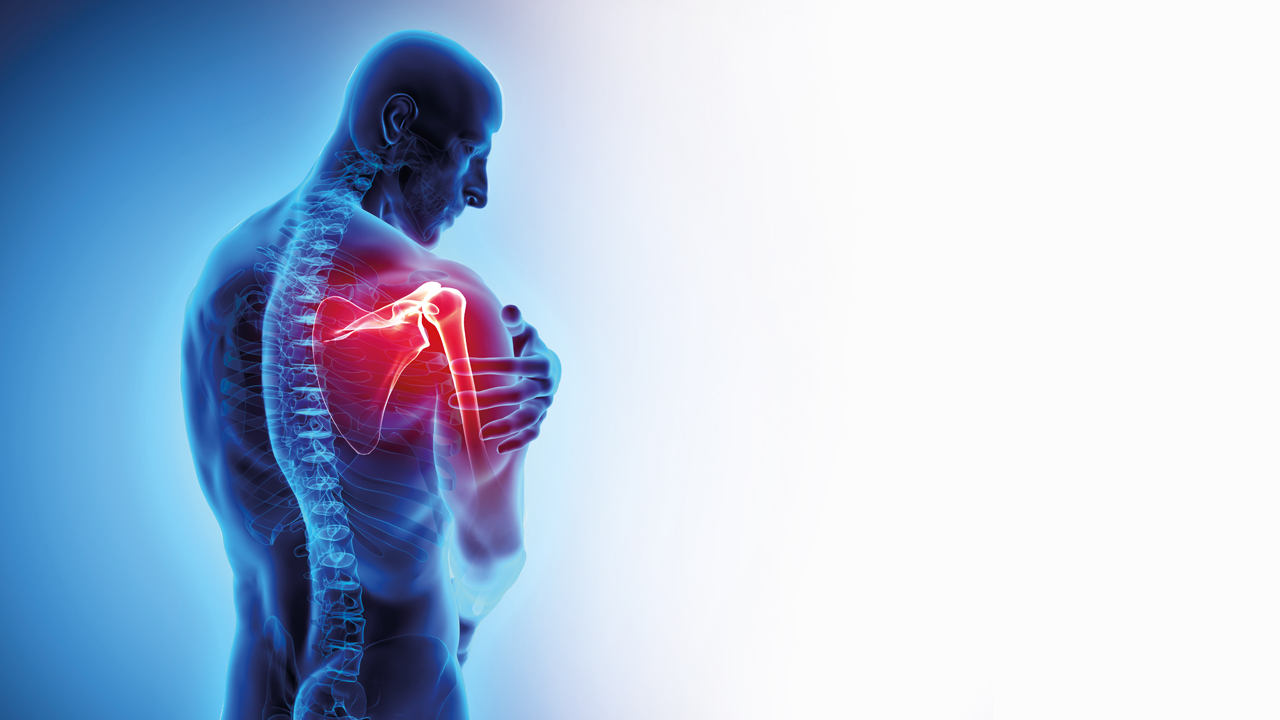In Conditions
Follow this topic
Bookmark
Record learning outcomes
Over 20 million people in the UK are living with a musculoskeletal (MSK) condition, such as arthritis or back pain, according to the NHS. The symptoms can affect a patient’s quality of life and independence, as well as mental health. And it’s not just individuals who suffer, but employers, the NHS and the wider economy too. In fact, more than 30 million working days are estimated to be lost due to MSK conditions every year in the UK whilst concerns account for 30 per cent of GP consultations in England.
Although some acute and chronic pain conditions require specialist care, many can be managed in the pharmacy with over-the-counter (OTC) medicines and practical self care measures.
Get to the joint
As we get older, joint pain becomes increasingly more common and can be felt in areas including the knees, shoulders and hips. There are many possible causes which can be indicated by symptoms a customer is experiencing.
Joints
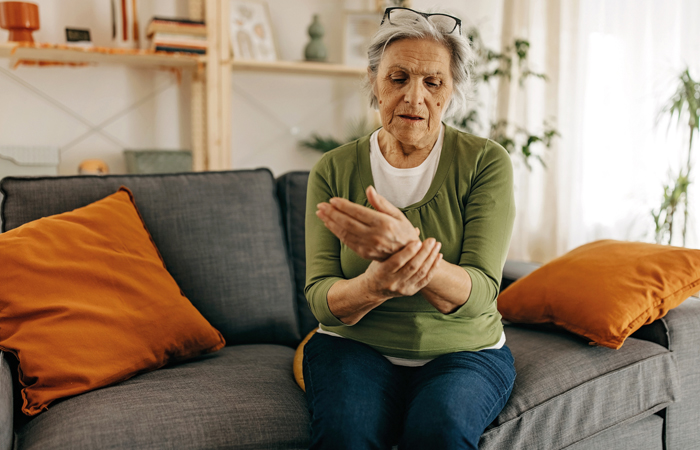
There are 10 million people in the UK living with arthritis, according to charity Versus Arthritis. Although older people are most prone to arthritis, it can affect people of any age, including children. Anyone with pain in or around a joint that doesn’t get better after a few days, especially if there’s no obvious cause, should consult their GP.
“While there are many causes of pain, experiencing pain, swelling and stiffness in one or multiple joints, which is partic...
There are 10 million people in the UK living with arthritis, according to charity Versus Arthritis. Although older people are most prone to arthritis, it can affect people of any age, including children. Anyone with pain in or around a joint that doesn’t get better after a few days, especially if there’s no obvious cause, should consult their GP.
“While there are many causes of pain, experiencing pain, swelling and stiffness in one or multiple joints, which is particularly bad in a morning, would be an indicator that arthritis is the source,” says Kenny Chan, Numark lead information pharmacist. “Another major differentiator between arthritis and pain caused by an injury, for example, is that arthritis will get better with movement and worse with a lack of activity.”
Osteoarthritis, the most common form of arthritis, is usually associated with wear and tear. It’s more common in women, especially those over 45. Osteoarthritis pain may be managed with OTC analgesics, alongside exercise and physiotherapy. “Over-the-counter medicines can certainly contribute towards the relief of symptoms from osteoarthritis,” adds Kenny. “Pharmacists are well placed to recommend painkillers such as ibuprofen or paracetamol. Ibuprofen has an anti-inflammatory action as well as analgesic action, so may be more beneficial in relieving joint pain. However, it needs to be taken with caution by patients on warfarin (as it can increase the risk of bleeding), those with asthma who have never taken it before, or those with gastrointestinal disease. In some cases, co-codamol could be considered, but OTC usage must be limited to three days, and it has more associated adverse reactions, such as constipation.”
Rheumatoid arthritis, a form of inflammatory arthritis, is an auto-immune condition that can cause sore, stiff and swollen joints. “Swelling, increased pain, decreased mobility and persistent stiffness, increased temperature or redness all indicate an active arthritis flare,” says Dr Deepak Ravindran, consultant in pain and pain management and author of ‘The Pain-Free Mindset’. “OTC oral and topical pain relief products are very useful in an active flare as these can provide a reduction in pain and swelling and distraction.”
Lifestyle measures are important in the management of arthritis too. “I usually recommend regular gentle exercise and stretching to maintain flexibility and strengthen muscles around joints,” says Dr Rod Hughes, consultant rheumatologist in Surrey. “This is alongside a healthy balanced diet, which helps to keep your weight in check, reducing the strain on load-bearing joints such as knees and hips. In addition, adding an anti-inflammatory supplement may be of great help, as all osteoarthritis has a degree of associated inflammation.”
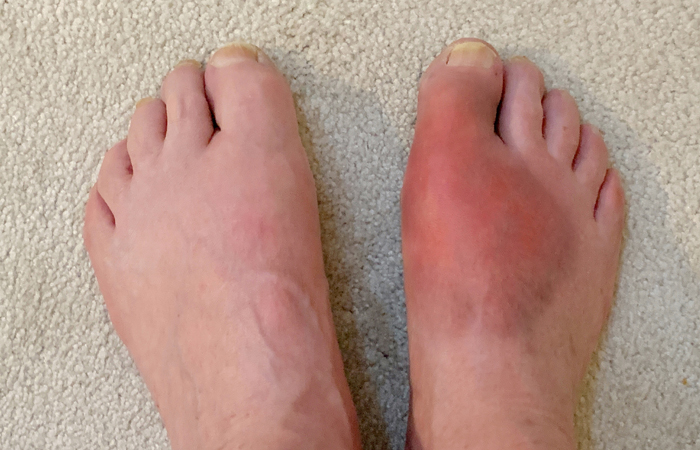
Gout typically affects the big toe, although it can affect other joints as well. The joints become red and hot, and the skin may look shiny and begin to peel. The condition is caused by having too much urate (uric acid) in the body, which builds up in the joints and forms tiny crystals that trigger inflammation. Risk factors include family history, being overweight, going through the menopause, and drinking alcohol (especially beer and spirits). Eating a lot of red meat, offal and seafood may...
Gout typically affects the big toe, although it can affect other joints as well. The joints become red and hot, and the skin may look shiny and begin to peel. The condition is caused by having too much urate (uric acid) in the body, which builds up in the joints and forms tiny crystals that trigger inflammation. Risk factors include family history, being overweight, going through the menopause, and drinking alcohol (especially beer and spirits). Eating a lot of red meat, offal and seafood may cause a build-up of uric acid, so limiting these foods may help to ease the symptoms and reduce flare-ups.
Many people with gout take regular medicines (e.g., allopurinol or febuxostat) to reduce the amount of urate in their body and prevent gout attacks. Medicines such as non-steroidal anti-inflammatory drugs and paracetamol may provide short-term pain relief during an acute flare up.
“When discussing pain relief options for gout, a thorough consultation with the patient is especially pertinent,” says Kenny. “It’s important to advise against the use of aspirin and other medicines that contain acetylsalicylic acid, which can make gout worse. NSAIDs also carry potential side effects, such as an increase in blood pressure.”
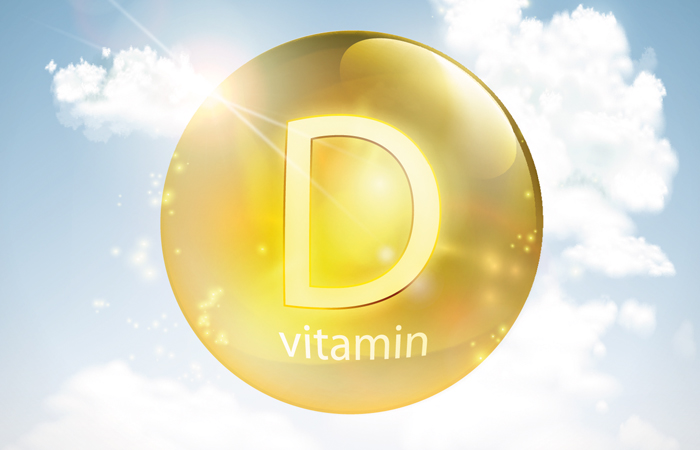
Vitamin D deficiency may cause generalised joint, bone and muscle pain as well as fatigue. Some research suggests that low vitamin D levels are associated with certain types of arthritis (such as osteoarthritis and rheumatoid arthritis).
“Patients who have low levels of vitamin D often have joint pain, so it may be appropriate to offer them a calcium and vitamin D supplement,” explains Kenny. “It’s important to note that vitamin D isn’t a cure for pain, b...
Vitamin D deficiency may cause generalised joint, bone and muscle pain as well as fatigue. Some research suggests that low vitamin D levels are associated with certain types of arthritis (such as osteoarthritis and rheumatoid arthritis).
“Patients who have low levels of vitamin D often have joint pain, so it may be appropriate to offer them a calcium and vitamin D supplement,” explains Kenny. “It’s important to note that vitamin D isn’t a cure for pain, but if a patient has vitamin D deficiency, this could be contributing to increased pain and hindering recovery.”
Most people in the UK benefit from taking a daily 10 mcg vitamin D supplement during the winter months. “If a pharmacist suspects pain can be attributed to vitamin D deficiency, they should suggest a higher-dose supplement throughout the year, with a wide variety available to suit specific needs,” adds Kenny. “The best supplements contain vitamin D3. This is the same form of the vitamin that the body makes from sunlight and is generally absorbed better than vitamin D2. Fish oil, such as cod liver oil, can be an alternative source of vitamin D and may have other benefits for arthritis, too.”
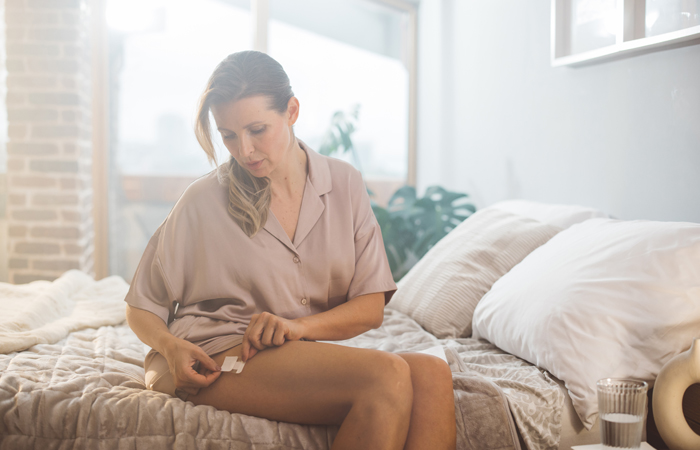
Joint pain is a common symptom of the menopause, triggered by fluctuating oestrogen levels. It often affects the neck, shoulders, spine, elbows, hands and knees, especially first thing in the morning. Hot flushes, a lack of good-quality sleep, and mood changes can make the pain seem much worse.
“Oestrogen is a natural anti-inflammatory, playing an important role in helping to prevent joint inflammation and pain,” says Kenny. “When levels of oestrogen naturally...
Joint pain is a common symptom of the menopause, triggered by fluctuating oestrogen levels. It often affects the neck, shoulders, spine, elbows, hands and knees, especially first thing in the morning. Hot flushes, a lack of good-quality sleep, and mood changes can make the pain seem much worse.
“Oestrogen is a natural anti-inflammatory, playing an important role in helping to prevent joint inflammation and pain,” says Kenny. “When levels of oestrogen naturally fall in the lead up to and during the menopause, this joint protection can sometimes weaken, causing joint aches and stiffness.”
Lifestyle measures can often help, along with using painkillers. “Use of topical or oral anti-inflammatories such as ibuprofen or naproxen is an option,” says Dr Ravindran. “HRT patches can make a difference. Herbal remedies are often given, but evidence is sparse for their action. One ingredient that could be helpful because of its anti-inflammatory action is curcumin (turmeric) capsules.”
Muscles
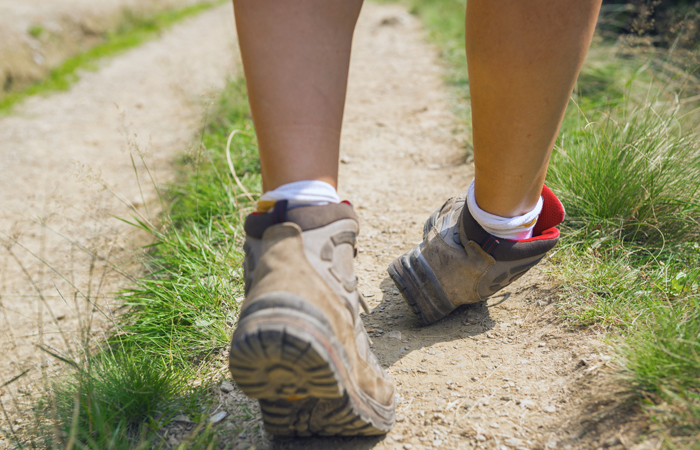
Sprains and strains are common soft tissue injuries, affecting the muscles and ligaments. Signs and symptoms include:
- Pain, tenderness or weakness
- Swelling and bruising after an injury
- Not being able to put weight on an injured part of the body
- Muscle spasms and cramping.
Repetitive strain injuries may occur in people doing the same arm movements over and over again, such as when typing, gardening, playing racket sports,...
Sprains and strains are common soft tissue injuries, affecting the muscles and ligaments. Signs and symptoms include:
- Pain, tenderness or weakness
- Swelling and bruising after an injury
- Not being able to put weight on an injured part of the body
- Muscle spasms and cramping.
Repetitive strain injuries may occur in people doing the same arm movements over and over again, such as when typing, gardening, playing racket sports, or cleaning. The pain is usually felt in the dominant arm.
“Recommend the RICE method to patients who are seeking advice in relation to joint pain caused by muscle strain from a sports injury,” says Sue Swift, Numark information technician. “This stands for Rest, Ice, Compression and Elevation. We recommend rest if the injury or pain is brought on by repetitive strain. Healthcare professionals should recommend that patients suffering with joint pain try an injury ice pack to help circulation and inflammation, decrease pain and assist with any swelling, muscle spasming or cramping. The ice pack should be applied for approximately 15 minutes at a time, around every two to three hours.”
To help prevent swelling, customers should try to avoid heat (such as hot baths and heat packs), alcohol and massages for the first couple of days after the injury. Most sprains and strains clear up after a couple of weeks, but it’s important to avoid strenuous activity for around eight weeks to make sure the injury doesn’t recur.
Pain relief is also important, along with gentle movement. “Use of simple analgesics like paracetamol and NSAIDS (topical or oral) would be first preference, and start stretching once some pain relief is there,” adds Dr Ravindran.

Stress can cause muscles to tense and tighten. It’s the body’s way of guarding against injury but can lead to pain and stiffness. Ongoing stress may affect the neck and shoulders, jaw and forehead, and may trigger chronic pain conditions such as fibromyalgia.
“Both stress and lack of sleep can activate the body’s sympathetic system and release cortisol and adrenaline into the circulation preparing you for fight-and-flight response,” says Dr Ravindran. &ld...
Stress can cause muscles to tense and tighten. It’s the body’s way of guarding against injury but can lead to pain and stiffness. Ongoing stress may affect the neck and shoulders, jaw and forehead, and may trigger chronic pain conditions such as fibromyalgia.
“Both stress and lack of sleep can activate the body’s sympathetic system and release cortisol and adrenaline into the circulation preparing you for fight-and-flight response,” says Dr Ravindran. “The muscles’ response would be too ready and tense. Even though no danger is happening, this persistent tension ends up causing pain or making pre-existing pain worse.”
Stress management is essential to reduce muscle tension and increase mood – customers could try relaxation techniques, meditation, mindfulness and/or cognitive behavioural therapy (CBT) to find a method that suits them best. Herbal stress remedies may also help in the short-term.
“Correcting the root cause, i.e., resolving the stress or improving sleep, combined with the short-term use of medicines such as muscle relaxants and physiotherapy/stretches, would the ideal way forward,” says Dr Ravindran. “Topical treatments can be considered alongside lifestyle choices, stretches, physio or oral medicine for the muscle pain.”
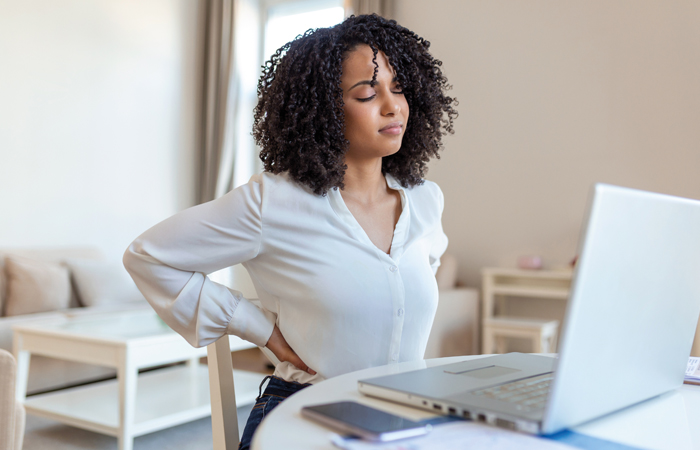
Slouching in a chair or standing with stooped shoulders can cause pain all over the body but especially in the lower back. “Lower back pain, in particular, reacts well to heat therapy, including the use of heat patches, which can be worn for up to eight hours,” says Sue. “Back braces are available from pharmacies and can help correct posture and the route of pain, while taking some of the pressure to relieve it. In cases of chronic pain (lasting over three months) a pharmaci...
Slouching in a chair or standing with stooped shoulders can cause pain all over the body but especially in the lower back. “Lower back pain, in particular, reacts well to heat therapy, including the use of heat patches, which can be worn for up to eight hours,” says Sue. “Back braces are available from pharmacies and can help correct posture and the route of pain, while taking some of the pressure to relieve it. In cases of chronic pain (lasting over three months) a pharmacist can recommend a patient invests in a TENS machine to manage particularly bad bouts of pain at home.”
“Exercise and movement which focus on stretching and strengthening are key for anyone with back pain,” agrees Elaine Walker, senior brand manager for Deep Heat and Deep Freeze. “Sitting for long periods can weaken muscles, shorten tendons, make postural problems worse, and exacerbate back discomfort.1 Use of topical heat therapy can make moving about and exercise feel more viable.”

A lack of sleep, or poor sleep quality, can cause muscle tension and stop muscles from relaxing after a busy day. Sleep problems can also make existing chronic pain conditions worse, so it’s important to look for an underlying cause. The trigger may be poor sleeping position or an uncomfortable bed or mattress, or be due to stress, hormones or an irregular sleep routine.
“Our real-world research showed that four in five of us have suffered from disrupted sleep due to joint...
A lack of sleep, or poor sleep quality, can cause muscle tension and stop muscles from relaxing after a busy day. Sleep problems can also make existing chronic pain conditions worse, so it’s important to look for an underlying cause. The trigger may be poor sleeping position or an uncomfortable bed or mattress, or be due to stress, hormones or an irregular sleep routine.
“Our real-world research showed that four in five of us have suffered from disrupted sleep due to joint or muscle pain,” says Elvy Mardjono, senior brand manager for Deep Relief. “Two-thirds said pain wakes them up during the night, with 72 per cent saying they feel uncomfortable when lying in certain positions, while half of respondents said they struggle to even fall asleep.
“Sleep disruption itself can play havoc with muscle and joint pain as it can alter the nerve signals in the brain and reduce the pain threshold – a study in healthy adults found that even moderate sleep loss induces inflammatory cytokines. So, we need to be dealing with muscle and joint pain as soon as it arises. Plus, soothing pain can help avoid sleep issues.”
“Most community pharmacies will be well versed in what to recommend for sleep problems,” says Kenny. “Community pharmacies should provide advice on over-the-counter sleep aids that will help break the cycle of insomnia. General sleep pattern advice is also recommended, such as avoiding the use of mobile phones or TVs one hour prior to bedtime and having a warm milky drink.”
Joints

There are 10 million people in the UK living with arthritis, according to charity Versus Arthritis. Although older people are most prone to arthritis, it can affect people of any age, including children. Anyone with pain in or around a joint that doesn’t get better after a few days, especially if there’s no obvious cause, should consult their GP.
“While there are many causes of pain, experiencing pain, swelling and stiffness in one or multiple joints, which is partic...
There are 10 million people in the UK living with arthritis, according to charity Versus Arthritis. Although older people are most prone to arthritis, it can affect people of any age, including children. Anyone with pain in or around a joint that doesn’t get better after a few days, especially if there’s no obvious cause, should consult their GP.
“While there are many causes of pain, experiencing pain, swelling and stiffness in one or multiple joints, which is particularly bad in a morning, would be an indicator that arthritis is the source,” says Kenny Chan, Numark lead information pharmacist. “Another major differentiator between arthritis and pain caused by an injury, for example, is that arthritis will get better with movement and worse with a lack of activity.”
Osteoarthritis, the most common form of arthritis, is usually associated with wear and tear. It’s more common in women, especially those over 45. Osteoarthritis pain may be managed with OTC analgesics, alongside exercise and physiotherapy. “Over-the-counter medicines can certainly contribute towards the relief of symptoms from osteoarthritis,” adds Kenny. “Pharmacists are well placed to recommend painkillers such as ibuprofen or paracetamol. Ibuprofen has an anti-inflammatory action as well as analgesic action, so may be more beneficial in relieving joint pain. However, it needs to be taken with caution by patients on warfarin (as it can increase the risk of bleeding), those with asthma who have never taken it before, or those with gastrointestinal disease. In some cases, co-codamol could be considered, but OTC usage must be limited to three days, and it has more associated adverse reactions, such as constipation.”
Rheumatoid arthritis, a form of inflammatory arthritis, is an auto-immune condition that can cause sore, stiff and swollen joints. “Swelling, increased pain, decreased mobility and persistent stiffness, increased temperature or redness all indicate an active arthritis flare,” says Dr Deepak Ravindran, consultant in pain and pain management and author of ‘The Pain-Free Mindset’. “OTC oral and topical pain relief products are very useful in an active flare as these can provide a reduction in pain and swelling and distraction.”
Lifestyle measures are important in the management of arthritis too. “I usually recommend regular gentle exercise and stretching to maintain flexibility and strengthen muscles around joints,” says Dr Rod Hughes, consultant rheumatologist in Surrey. “This is alongside a healthy balanced diet, which helps to keep your weight in check, reducing the strain on load-bearing joints such as knees and hips. In addition, adding an anti-inflammatory supplement may be of great help, as all osteoarthritis has a degree of associated inflammation.”

Gout typically affects the big toe, although it can affect other joints as well. The joints become red and hot, and the skin may look shiny and begin to peel. The condition is caused by having too much urate (uric acid) in the body, which builds up in the joints and forms tiny crystals that trigger inflammation. Risk factors include family history, being overweight, going through the menopause, and drinking alcohol (especially beer and spirits). Eating a lot of red meat, offal an...
Gout typically affects the big toe, although it can affect other joints as well. The joints become red and hot, and the skin may look shiny and begin to peel. The condition is caused by having too much urate (uric acid) in the body, which builds up in the joints and forms tiny crystals that trigger inflammation. Risk factors include family history, being overweight, going through the menopause, and drinking alcohol (especially beer and spirits). Eating a lot of red meat, offal and seafood may cause a build-up of uric acid, so limiting these foods may help to ease the symptoms and reduce flare-ups.
Many people with gout take regular medicines (e.g., allopurinol or febuxostat) to reduce the amount of urate in their body and prevent gout attacks. Medicines such as non-steroidal anti-inflammatory drugs and paracetamol may provide short-term pain relief during an acute flare up.
“When discussing pain relief options for gout, a thorough consultation with the patient is especially pertinent,” says Kenny. “It’s important to advise against the use of aspirin and other medicines that contain acetylsalicylic acid, which can make gout worse. NSAIDs also carry potential side effects, such as an increase in blood pressure.”

Vitamin D deficiency may cause generalised joint, bone and muscle pain as well as fatigue. Some research suggests that low vitamin D levels are associated with certain types of arthritis (such as osteoarthritis and rheumatoid arthritis).
“Patients who have low levels of vitamin D often have joint pain, so it may be appropriate to offer them a calcium and vitamin D supplement,” explains Kenny. “It’s important t...
Vitamin D deficiency may cause generalised joint, bone and muscle pain as well as fatigue. Some research suggests that low vitamin D levels are associated with certain types of arthritis (such as osteoarthritis and rheumatoid arthritis).
“Patients who have low levels of vitamin D often have joint pain, so it may be appropriate to offer them a calcium and vitamin D supplement,” explains Kenny. “It’s important to note that vitamin D isn’t a cure for pain, but if a patient has vitamin D deficiency, this could be contributing to increased pain and hindering recovery.”
Most people in the UK benefit from taking a daily 10 mcg vitamin D supplement during the winter months. “If a pharmacist suspects pain can be attributed to vitamin D deficiency, they should suggest a higher-dose supplement throughout the year, with a wide variety available to suit specific needs,” adds Kenny. “The best supplements contain vitamin D3. This is the same form of the vitamin that the body makes from sunlight and is generally absorbed better than vitamin D2. Fish oil, such as cod liver oil, can be an alternative source of vitamin D and may have other benefits for arthritis, too.”

Joint pain is a common symptom of the menopause, triggered by fluctuating oestrogen levels. It often affects the neck, shoulders, spine, elbows, hands and knees, especially first thing in the morning. Hot flushes, a lack of good-quality sleep, and mood changes can make the pain seem much worse.
“Oestrogen is a natural anti-inflammatory, playing an important role in helping to prevent joint inflammation and pain,” says Kenny. “When levels of oestrog...
Joint pain is a common symptom of the menopause, triggered by fluctuating oestrogen levels. It often affects the neck, shoulders, spine, elbows, hands and knees, especially first thing in the morning. Hot flushes, a lack of good-quality sleep, and mood changes can make the pain seem much worse.
“Oestrogen is a natural anti-inflammatory, playing an important role in helping to prevent joint inflammation and pain,” says Kenny. “When levels of oestrogen naturally fall in the lead up to and during the menopause, this joint protection can sometimes weaken, causing joint aches and stiffness.”
Lifestyle measures can often help, along with using painkillers. “Use of topical or oral anti-inflammatories such as ibuprofen or naproxen is an option,” says Dr Ravindran. “HRT patches can make a difference. Herbal remedies are often given, but evidence is sparse for their action. One ingredient that could be helpful because of its anti-inflammatory action is curcumin (turmeric) capsules.”
Muscle in
The human body has over 600 muscles, so occasional pain can be expected and is often temporary. Muscle pain usually occurs when an individual has over-exerted themselves physically but it can be linked to mental health issues such as stress.
Coping with period pain
Period pain can usually be defined as painful muscle cramps in the lower abdomen which can spread to the back and thighs. Everyone gets it differently – for some, it’s intense spasms while for others, it’s a dull ache or dragging feeling. The pain tends to occur for a few days at the start of the period, but some women get it beforehand. It often varies from period to period, and may have an underlying cause, such as endometriosis or fibroids.
Ibuprofen and naproxen tend to be more effective at easing period pain than paracetamol, due to their anti-inflammatory action. Light exercise, heat pads, gentle massage, a warm bath or shower and relaxation techniques may also help. If the pain is severe, or suddenly gets worse, or periods change (e.g., heavier bleeding), it’s important to refer patients to the pharmacist.
References
1. Gupta N et al. (2015) Is objectively measured sitting time associated with low back pain? A cross-sectional investigation in the NOMAD study. PloS one 10: e0121159.
Muscles

Sprains and strains are common soft tissue injuries, affecting the muscles and ligaments. Signs and symptoms include:
- Pain, tenderness or weakness
- Swelling and bruising after an injury
- Not being able to put weight on an injured part of the body
- Muscle spasms and cramping.
Repetitive strain injuries may occur in people doing the same arm movements over and over again, such as when typing, gardening, playing racket sports,...
Sprains and strains are common soft tissue injuries, affecting the muscles and ligaments. Signs and symptoms include:
- Pain, tenderness or weakness
- Swelling and bruising after an injury
- Not being able to put weight on an injured part of the body
- Muscle spasms and cramping.
Repetitive strain injuries may occur in people doing the same arm movements over and over again, such as when typing, gardening, playing racket sports, or cleaning. The pain is usually felt in the dominant arm.
“Recommend the RICE method to patients who are seeking advice in relation to joint pain caused by muscle strain from a sports injury,” says Sue Swift, Numark information technician. “This stands for Rest, Ice, Compression and Elevation. We recommend rest if the injury or pain is brought on by repetitive strain. Healthcare professionals should recommend that patients suffering with joint pain try an injury ice pack to help circulation and inflammation, decrease pain and assist with any swelling, muscle spasming or cramping. The ice pack should be applied for approximately 15 minutes at a time, around every two to three hours.”
To help prevent swelling, customers should try to avoid heat (such as hot baths and heat packs), alcohol and massages for the first couple of days after the injury. Most sprains and strains clear up after a couple of weeks, but it’s important to avoid strenuous activity for around eight weeks to make sure the injury doesn’t recur.
Pain relief is also important, along with gentle movement. “Use of simple analgesics like paracetamol and NSAIDS (topical or oral) would be first preference, and start stretching once some pain relief is there,” adds Dr Ravindran.

Stress can cause muscles to tense and tighten. It’s the body’s way of guarding against injury but can lead to pain and stiffness. Ongoing stress may affect the neck and shoulders, jaw and forehead, and may trigger chronic pain conditions such as fibromyalgia.
“Both stress and lack of sleep can activate the body’s sympathetic system and release cortisol and adrenaline into the circulation preparing you for fight-and-flight response,” says Dr Ravindran. &ld...
Stress can cause muscles to tense and tighten. It’s the body’s way of guarding against injury but can lead to pain and stiffness. Ongoing stress may affect the neck and shoulders, jaw and forehead, and may trigger chronic pain conditions such as fibromyalgia.
“Both stress and lack of sleep can activate the body’s sympathetic system and release cortisol and adrenaline into the circulation preparing you for fight-and-flight response,” says Dr Ravindran. “The muscles’ response would be too ready and tense. Even though no danger is happening, this persistent tension ends up causing pain or making pre-existing pain worse.”
Stress management is essential to reduce muscle tension and increase mood – customers could try relaxation techniques, meditation, mindfulness and/or cognitive behavioural therapy (CBT) to find a method that suits them best. Herbal stress remedies may also help in the short-term.
“Correcting the root cause, i.e., resolving the stress or improving sleep, combined with the short-term use of medicines such as muscle relaxants and physiotherapy/stretches, would the ideal way forward,” says Dr Ravindran. “Topical treatments can be considered alongside lifestyle choices, stretches, physio or oral medicine for the muscle pain.”

Slouching in a chair or standing with stooped shoulders can cause pain all over the body but especially in the lower back. “Lower back pain, in particular, reacts well to heat therapy, including the use of heat patches, which can be worn for up to eight hours,” says Sue. “Back braces are available from pharmacies and can help correct posture and the route of pain, while taking some of the pressure to relieve it. In cases of chronic pain (lasting over three months) a pharmaci...
Slouching in a chair or standing with stooped shoulders can cause pain all over the body but especially in the lower back. “Lower back pain, in particular, reacts well to heat therapy, including the use of heat patches, which can be worn for up to eight hours,” says Sue. “Back braces are available from pharmacies and can help correct posture and the route of pain, while taking some of the pressure to relieve it. In cases of chronic pain (lasting over three months) a pharmacist can recommend a patient invests in a TENS machine to manage particularly bad bouts of pain at home.”
“Exercise and movement which focus on stretching and strengthening are key for anyone with back pain,” agrees Elaine Walker, senior brand manager for Deep Heat and Deep Freeze. “Sitting for long periods can weaken muscles, shorten tendons, make postural problems worse, and exacerbate back discomfort.1 Use of topical heat therapy can make moving about and exercise feel more viable.”

A lack of sleep, or poor sleep quality, can cause muscle tension and stop muscles from relaxing after a busy day. Sleep problems can also make existing chronic pain conditions worse, so it’s important to look for an underlying cause. The trigger may be poor sleeping position or an uncomfortable bed or mattress, or be due to stress, hormones or an irregular sleep routine.
“Our real-world research showed that four in five of us have suffered from disrupted sleep due to joint...
A lack of sleep, or poor sleep quality, can cause muscle tension and stop muscles from relaxing after a busy day. Sleep problems can also make existing chronic pain conditions worse, so it’s important to look for an underlying cause. The trigger may be poor sleeping position or an uncomfortable bed or mattress, or be due to stress, hormones or an irregular sleep routine.
“Our real-world research showed that four in five of us have suffered from disrupted sleep due to joint or muscle pain,” says Elvy Mardjono, senior brand manager for Deep Relief. “Two-thirds said pain wakes them up during the night, with 72 per cent saying they feel uncomfortable when lying in certain positions, while half of respondents said they struggle to even fall asleep.
“Sleep disruption itself can play havoc with muscle and joint pain as it can alter the nerve signals in the brain and reduce the pain threshold – a study in healthy adults found that even moderate sleep loss induces inflammatory cytokines. So, we need to be dealing with muscle and joint pain as soon as it arises. Plus, soothing pain can help avoid sleep issues.”
“Most community pharmacies will be well versed in what to recommend for sleep problems,” says Kenny. “Community pharmacies should provide advice on over-the-counter sleep aids that will help break the cycle of insomnia. General sleep pattern advice is also recommended, such as avoiding the use of mobile phones or TVs one hour prior to bedtime and having a warm milky drink.”

